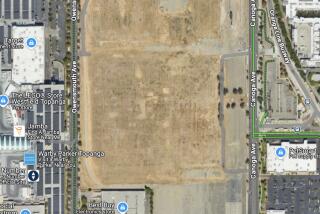Radon Blamed for Air Base Contamination : Toxics: Officials say the radioactive gas built up naturally, not from the disposal of nuclear weapons. A dozen workers were exposed.
- Share via
LIMESTONE, Me. — Radiation that contaminated a dozen workers at a U.S. air base came from radon gas that accumulated naturally and not from the improper disposal of nuclear weapons, the Air Force said Sunday.
The discovery means the workers, who were contaminated at Loring Air Force Base near the Canadian border, are less likely to suffer long-term health problems, Air Force officials said.
The workers were searching for toxic waste sites last Thursday when they were contaminated after drilling into the wall of the building that had been sealed since the 1960s.
The building was in an area once used to store nuclear weapons, but the Air Force had no records of what had been stored in the structure.
Radon gas accumulated in the building because the two-story building was made of brick and because of the length of time the structure had been sealed, said Lt. Bridget Reeder, an Air Force spokeswoman.
“Northern Maine is geologically predisposed to have radon gas, so it is not a surprise that we would have it,” Reeder said.
Radon is a colorless, odorless radioactive gas that comes from the natural breakdown of uranium, traces of which are often found in soils and granite bedrock.
Prolonged exposure to radon gas can cause lung cancer and results in 20,000 deaths in the United States each year, the Environmental Protection Agency said.
The Defense Department workers were decontaminated with sponge baths, and the building was resealed. The radiation posed no health threat to the surrounding community, the Air Force said.
More to Read
Sign up for Essential California
The most important California stories and recommendations in your inbox every morning.
You may occasionally receive promotional content from the Los Angeles Times.










